|
| |
|
BOSTOCK HERALDRY
|
|
The Arms
In the twelfth century it became common practise for a warrior to bear
symbols to identify himself in battle; these might be devices upon his
shield. Early insignia was of a simple fashion such as a plain
coloured, or party coloured shield, with a geometric pattern or some beast
painted on. A repeat of these
symbols upon his surcoat led to them being called his 'coat of arms'.
A
set of rules were developed to regulate the use of coats of arms. Certain colours were used: black, blue, red and green. Yellow and white were used to denote the metals gold and silver. In order to aid recognition over a great distance it was ordained
that a coloured symbol, or charge, should not be placed on a coloured
background, or a metal on a metal, only a combination of metal and colour
could be allowed.
Only the
senior line of the family could use the basic coat of arms; younger
members of the family had to use a 'differenced' coat.
A crescent on the coat of arms indicates the bearer to be a second
son of the family; a star, a third son; a small bird, a fourth; and so on.
Even today the rule applies so that just by bearing the name of
Bostock does not imply a right to use the basic coat of arms - a legal
right would have to be proved through the College of Arms in London.
The
Bostock family adopted a simple shield of arms - a black shield with a
silver horizontal band across the centre.
In heraldic language Sable, a
fess, humettee, argent. whilst the use of the horizontal band is very
common, the fact that it is cut off before reaching the edges of the
shield is rare in English heraldry, and is the only example in Cheshire.
|
|

BOSTOCK OF BOSTOCK, 1580
&
BOSTOCK OF MOULTON, 1580
TWO
�QUARTERED� COATS OF ARMS |
In the latter part of the 13th century heraldry indicated not only the
identity of an individual, but lordship and family alliances.
The arms of families allied by marriage became grouped together;
such a practise is known as 'marshalling'.
Generation by generation the Bostocks acquired extra lands and
lordships by marrying heiresses.
As they did so they added the arms of the wife's family to the
Bostock arms.
Eventually a complicated shield of arms, divided into many parts,
known as 'quarters' was achieved.
At the end of the 16th century Charles Bostock of London, a son of
Robert Bostock of Bostock, bore a shield consisting of 20 'quarters'.
The Bostock family of Holt bore an achievement of sixteen
'quarters'.
The Abingdon branch a shield of twelve.
In such a 'quartered' shield the subjects family arms always occupy
the top left corner. Despite the early simple coat of arms, those of the
Tudor period were very complicated.
Such coats of arms are useful to the student of heraldry and
genealogy as they portray a family's history through its marriage
alliances. |
|
Examples
of Bostock heraldry may be seen in the church of Moreton Say, Shropshire,
where there is an alabaster effigy to John Bostock; in the parish churches
of Abingdon and Dartford; and on a brass effigy in the church at
Whethemstead.
A
number of modern-day families legally bear arms.
The family who live at Sittingbourne, Kent, have the basic shield
differenced by a golden eagle above the silver band; their crest is a gold
bear's head, with a red muzzle, on a black tree-stump.
The Bostock family of Teddington, Middlesex, bear the basic shield
with two golden roses above the silver band and a Staffordshire knot
below; their crest is as the ancient crest but with the knot on the tree
stump.
|
|

Bostock
of Bostock
|
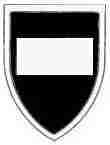
Bostock
of Belgrave
|
|
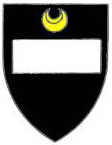
Bostock
of Churton
|
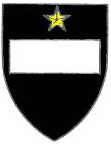
Bostock
of Moulton
|
|

Bostock
of Moreton Say
|
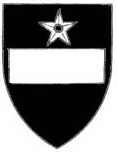
Bostock
of Whethamstead
|
|

Bostock
of Whixall
|
|
|
SOME
'DIFFERENCED' COATS OF ARMS
|
| The
Crest
For a crest (the item borne on top of the helmet) the family used a black
bear's head, with a gold muzzle, sitting upon a yellow tree stump.
The head has the appearance of having been torn off, and the tree
stump the appearance of having been torn out of the ground.
The
crest forms something of a pun. The
tree-stump is the 'stock' of a tree, and with the bear's head we have
'Bear-stock'. In the 15th century the crest was changed to a silver
�heraldic antelope� a mythical creature made up of the body, head and
tail of a lion, and the legs of a deer with cloven hooves.
It has a small curved horn on its nose and two straight, serrated
antlers. This change of crest may have been political.
The Bostocks served the Black Prince and his son, King Richard II.
One of the Prince's badges was a 'stock' of a tree, which he
distributed to his servants. The
usurping Lancastrian kings used an heraldic antelope as one of their
badges. Was the continued use
of the 'stock' in the crest an embarrassment in the early 15th century,
and was it then changed to the antelope?
|
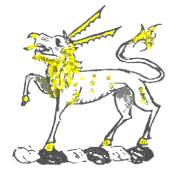
The later medieval crest
|
| Top
of page |
|








